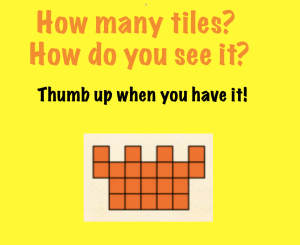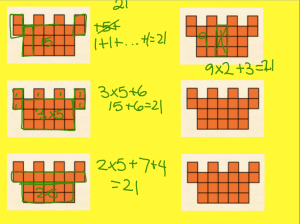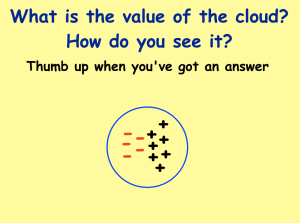Ok, so after actually starting a week of both middle school and my final grad school class, I have a new goal for 2015-16–embrace math talks. As part of my final class to get my masters, my adviser suggested I start utilizing pattern talks as a way to build understanding of slope and y-intercept among my 8th graders. I’ve dabbled in math talks before, attended sessions at conferences, read blogs and articles online. I love the premise and I whole-heartedly believe in their potential, but completely lack the confidence in myself to facilitate the kinds of talks I’d read about.
It wasn’t until I started to read Number Talks: Helping Children Build Mental Math and Computation Strategies by Sherry Parrish that my efficacy started to increase. She suggested starting with 5 small steps that suddenly made math talks seem much more attainable:
- Start with smaller problems to elicit multiple strategies
- Anticipate solutions and strategies and be prepared to share a strategy from a “previous student”
- Ok to put a student solution on the “back burner” – this was really important for me to read as I thought about my lack of confidence in leading a discussion.
- Limit talk to 5-15 min. This is really important for maximizing engagement. I don’t know if it’s a teacher thing, but I have this gut instinct for more, make it longer, talk about it more, when really I should just move on, end it, do a follow-up activity, but end the talk. Do the talk in the last 10 min of class if you’re worried about sticking to this.
- Be patent with myself and my students. Be willing to make mistakes, learn from them, and try again.
I use four terms to differentiate between four different types of talks I’ve been having:
- Pattern talk: putting a pattern on the board and asking students to make predictions about the next step
- Figure talk: scaffold up to a pattern talk by putting just a figure on the board and asking students “What do you see? How do you see it?”
- Number Talk: mental math computation like -75 + 12
- Math Talk: overall term for all of these different talks
Reflections so far:
8th grade
Overall Goal for the year: build understanding of slope and y-intercept using pattern talks
Started with a figure talk as a way of building up to a pattern talk.

Waited until all thumbs were up (it was pretty fast; this wasn’t meant to be hard).
All of the different strategies I recorded:

The first kid I called on thought I was insane. She just counted each tile one-by-one and didn’t understand why I was so interested in how she saw the figure. I think she assumed everyone did the same thing. Other kids immediately raised their hands, though, eager to share that they had seen it much differently.
What I did:
- Asked students to hold a thumb up in front of their chest when they had an answer; hold up a second finger if they had two different ways of getting the same answer
- Called on one student to share # of tiles and then asked if there were any other solutions before asking for strategies
- Anticipated different ways students would see the tiles
- Pre-planned how I would record student thinking
What I didn’t do:
- Ask “What do you see? How do you see it?” This was originally suggested to me by some research, but a colleague phrased it like that in her first class and got crickets. By changing the question to the one posted, we got much richer strategies and solutions.
- Have students talk to each other about different strategies
- Follow-up – ask students to do something after the talk to hold them accountable
What I want to do next:
- Pre-plan some student-to-student communication either by asking students to re-state in their own words what they heard a classmate say or by planning some Turn/Pair/Shares where students have to talk to a partner about a particular strategy. Not sure how to make this a rich, meaningful experience yet.
- Try a pattern talk now that they have seen that there are different ways of looking at a figure.
7th grade:
Overall goal: adding and subtracting integers and rational numbers (I know, integers are rational numbers, but I always feel like I need to delineate)
Number talks that have been productive:
2 + 2 + 2 + 2 + 2 + -2 + -2 + -2 =

These encouraged the idea of using opposites to add integers and connection between adding a negative and subtracting a positive. This also served as a great segway to talking about subtracting with the balloons and weights model.
As I think about planning math number talks, there are 5 things I’ve decided I need to think about beforehand (at this point anyway):
- What strategy/concept am I trying to highlight?
- Anticipate solutions – wrong and right
- How will I record solutions?
- How will I get students to talk to each other about different strategies presented during the talk?
- will I ask a student to repeat what they heard someone else say in their own words?
- Will I plan a turn/pair/share question to get students to discuss some aspect or make connections between different strategies?
- Follow-up: What will I ask my students to do to hold them accountable to Math Talk?
- hold them accountable to a particular strategy or accountable to whole talk?


